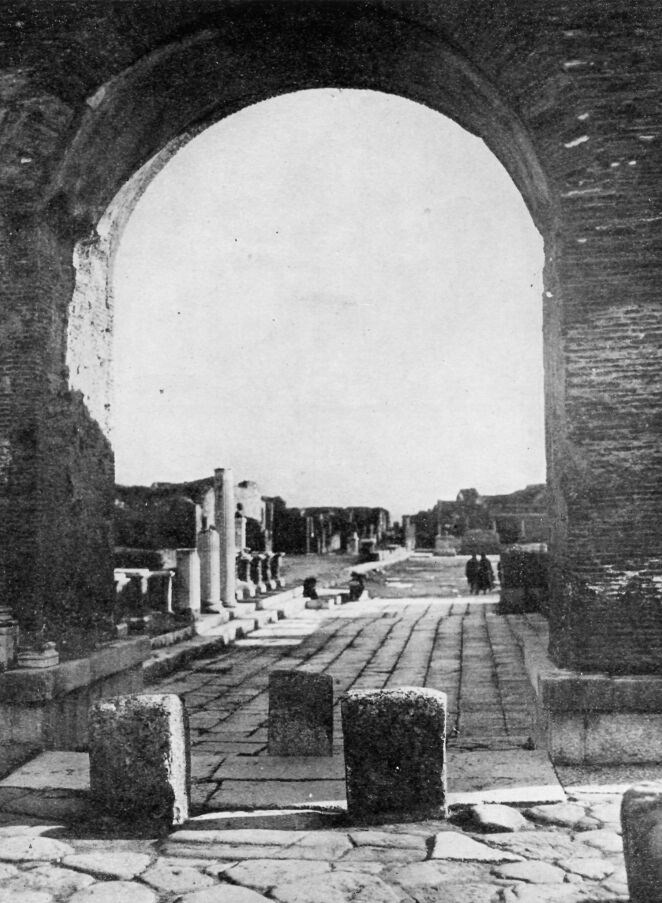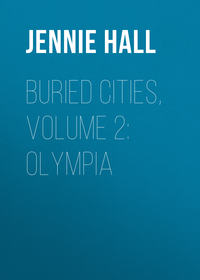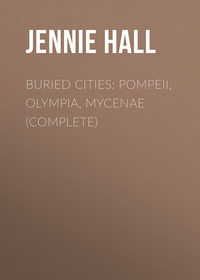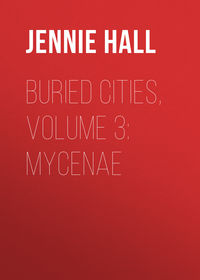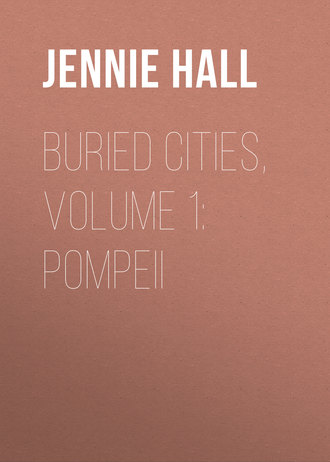 полная версия
полная версияПолная версия
Buried Cities, Volume 1: Pompeii
KITCHEN UTENSILS
These kettles and frying pans and ladles are made of bronze, an alloy of copper and tin. They look very much like our kitchen furnishings.
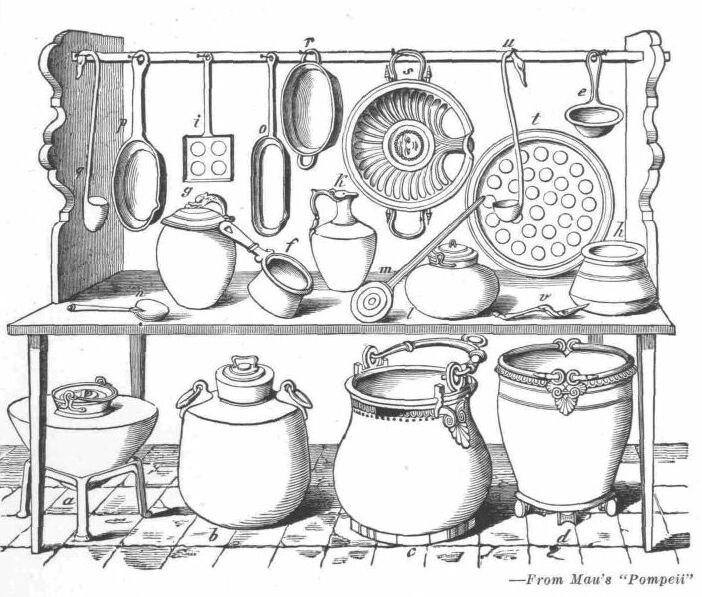
CENTAUR CUP
Some rich Pompeian had a pair of beautiful silver cups with graceful handles. The design was made in hammered silver, and showed centaurs talking to cupids that are sitting on their backs. A centaur was half man, half horse.
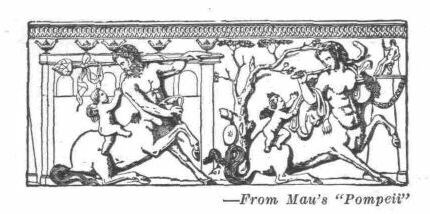
THE HOUSE OF THE TRAGIC POET (restored)
From the ruins and from ancient books, men know almost all the rooms of a Pompeian house. So they have pictured this one as it was before the disaster, with its many beautiful wall paintings, its mosaic floors, its tiled roofs. If you can imagine these two halves fitted together, and yourself inside, you can visit one of the most attractive houses in Pompeii. Do you see how the tiled roof slants downward from four sides to a rectangular opening in the highest part of the house? Below this opening was a shallow basin into which the rainwater fell. This basin was in the center of the atrium, the most important room in the house. The walls of this room were painted with scenes from the Trojan war. This is the house which has the mosaic picture of a dog on the floor of the long entrance hall (see next page). On each side of the hall, facing the street, are large rooms for shops, where, doubtless, the owner conducted his business. He was not a "Tragic Poet." Some people think he was a goldsmith. On each side of the atrium were sleeping rooms. Can you see that the doors are very high with a grating at the top to let in light and air? Windows were few and small, and generally the rooms took light and air from the inside courts rather than from outside. Back of the atrium was a large reception room with bedrooms on each side. And back of this was a large open court, or garden, with a colonnade on three sides and a solid wall at the back. Opening on this garden was a large dining room with beautiful wall paintings, a tiny kitchen, and some sleeping rooms. This house had stairways and second story rooms over the shops. This seems to us a very comfortable homelike house.
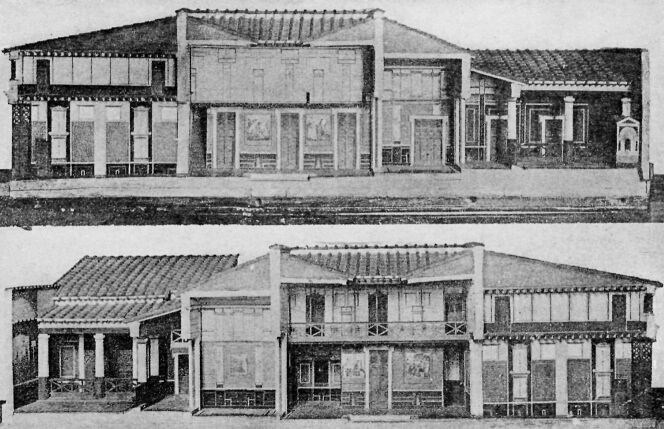
THE HOUSE OF THE TRAGIC POET (as it looks to-day)
Here you see the shallow basin in the floor of the atrium. This basin had two outlets. You can see the round cistern mouth near the pool. There was also an outlet to the street to carry off the overflow. At the back of the garden you can see a shrine to the household gods. At every meal a portion was set aside in little dishes for the gods.
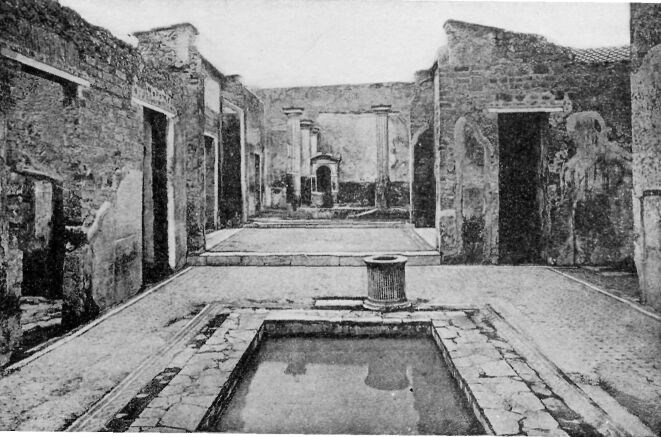
MOSAIC OF WATCH DOG
From the vestibule of the House of the Tragic Poet. It says loudly, "Beware the dog!" Pictures and patterns made of little pieces of polished stone like this are called mosaic. Sometimes American vestibules are tiled in a simple mosaic. Wouldn't it be fun if they had such exciting pictures as this? A real dog, or two or three, probably was standing inside the door, chained, or held by slaves.
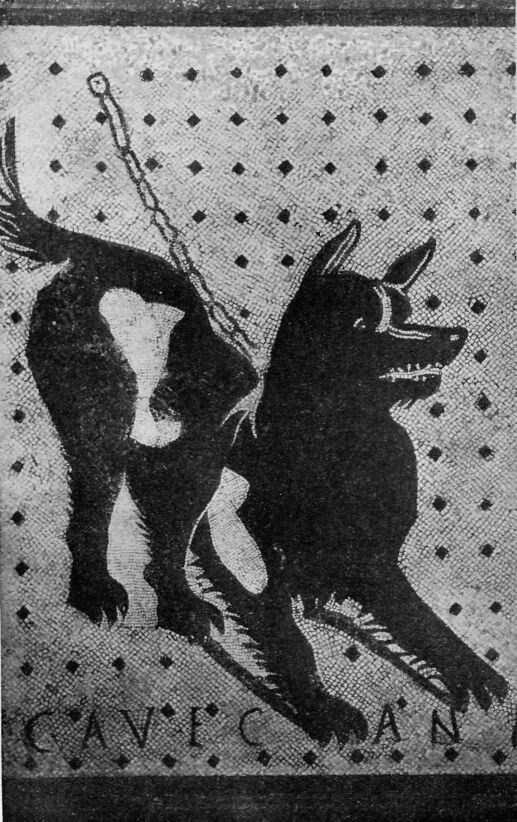
THE HOUSE OF DIOMEDE
There was a wine cellar under the colonnade. Here were twenty skeletons; two, children. Near the door were found skeletons of two men. One had a large key, doubtless the key of this door. He wore a gold ring and was carrying a good deal of money. He was probably the master of the house. Evidently the family thought at first that the wine cellar would be a safe place, but when they found that it was not so, the master took one slave and started out to find a way to escape. But they all perished.

RUINS OF A BAKERY, WITH MILLSTONES
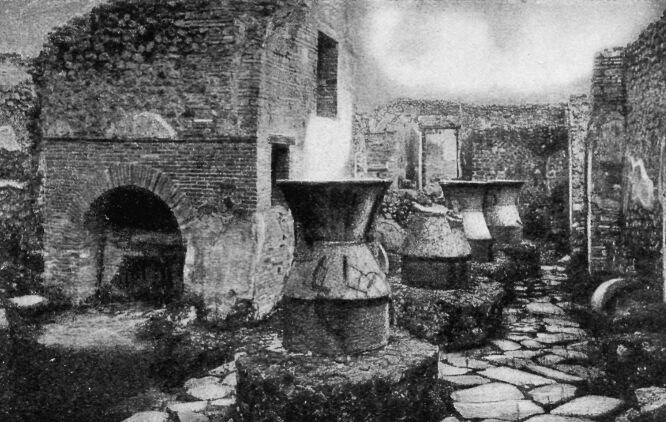
SECTION OF A MILL
If one of the mills that were found in the bakery were sawed in two, it would look like this. You can see where the baker's man poured in the wheat, and where the flour dropped down, and the heavy timbers fastened to the upper millstone to turn it by.

PORTRAIT OF LUCIUS CÆCILIUS JUCUNDUS
This Lucius was an auctioneer who had set free one of his slaves, Felix. Felix, in gratitude, had this portrait of his master cast in bronze. It stood on a marble pillar in the atrium of the house.

BRONZE CANDLEHOLDER
It is the figure of the Roman God Silenus. He was the son of Pan, and the oldest of the satyrs, who were supposed to be half goat. Can you find the goat's horns among his curls? He was a rollicking old satyr, very fond of wine, always getting into mischief. The grape design at the base of the little statue, and the snake supporting the candleholder, both are symbols of the sileni.
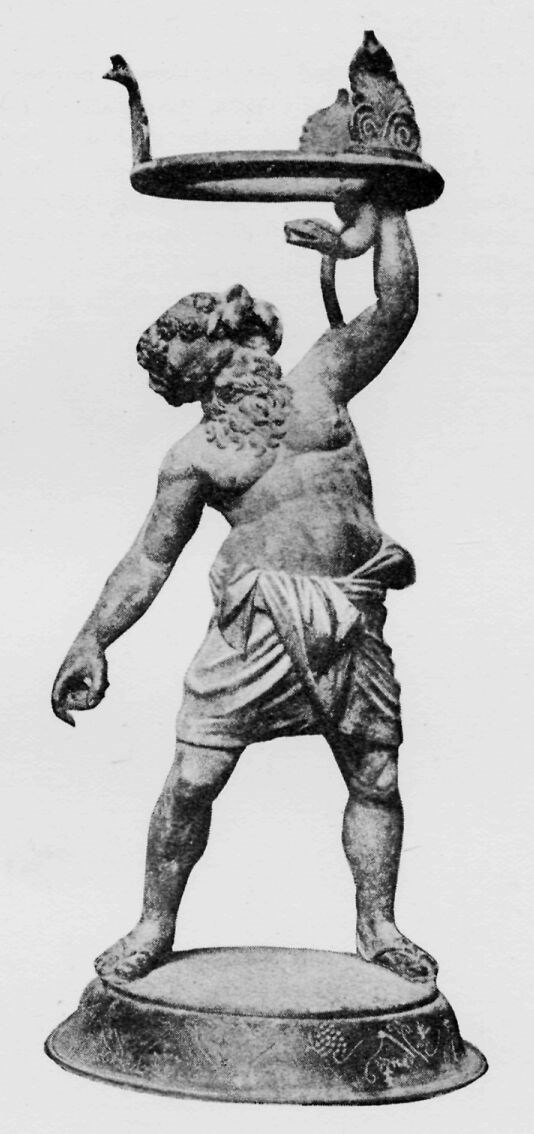
THE DANCING FAUN
In one of the largest and most elegant houses in Pompeii, on the floor of the atrium, or principal room of the house, men found in the ashes this bronze statue of a dancing faun. Doesn't he look as if he loved to dance, snapping his fingers to keep time? Although this great house contained on the floor of one room the most famous of ancient mosaic pictures, representing Alexander the Great in battle, and although it contains many other fine mosaics, it was named from this statue, the House of the Faun, Casa del Fauno.
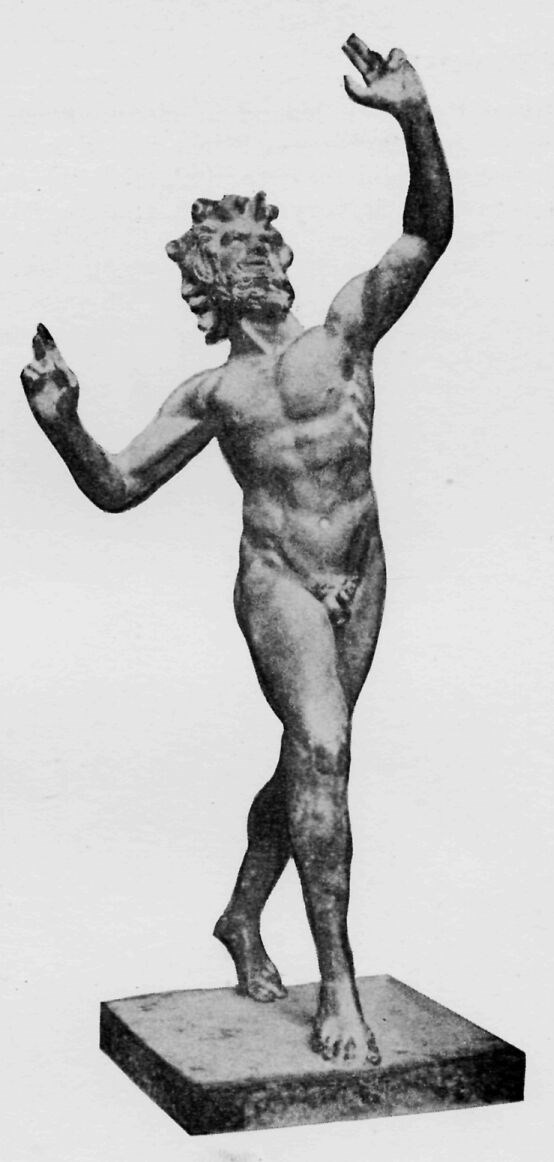
HERMES IN REPOSE
This bronze statue was found in Herculaneum, the city on the other slope of Vesuvius which was buried in liquid mud. This mud has become solid rock, from sixty to one hundred feet deep so that excavation is very difficult, and the city is still for the most part buried.
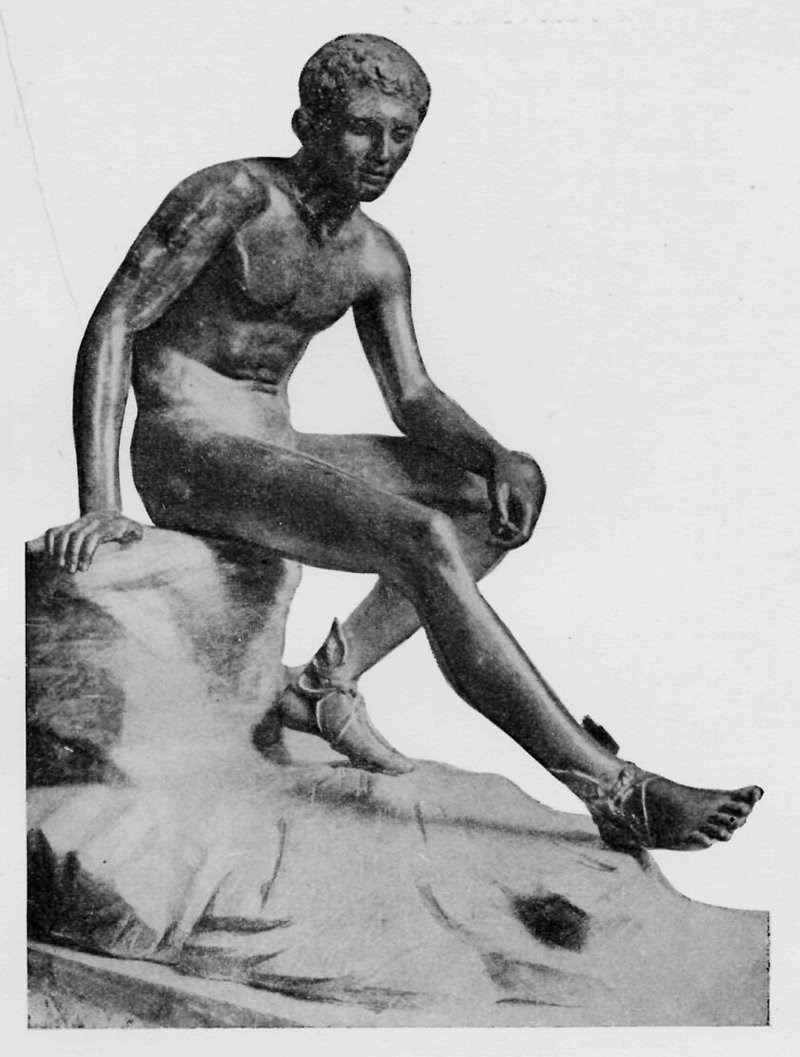
THE ARCH OF NERO
The visitors to-day are walking where Caius walked so long ago on the same paving stones. The three stones were set up to keep chariots out of the forum.
